Nothing Found
Sorry, no posts matched your criteria
Sorry, no posts matched your criteria
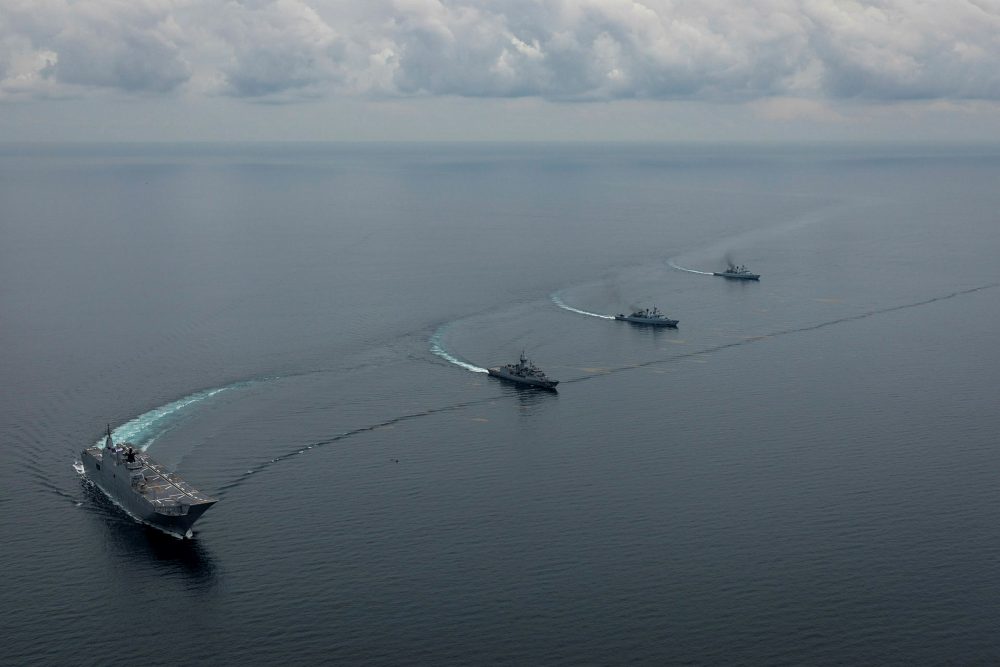
Originally published 22 September 2021.
When Australia announced the AUKUS pact together with the United States and United Kingdom, it knew that China would be hostile and France would be disappointed. Predicting the reaction in Southeast Asia would have been more difficult: views vary. From Australia’s perspective, its relations in the region have generally been good in recent years. So much so, that Jakarta even welcomed Canberra’s 2020 defence strategic update, though it foreshadowed Australia playing precisely the more regionally ambitious role that it is now pursuing.
While some countries, notably the Philippines and Singapore, were positive about the AUKUS announcement, statements from Jakarta and Kuala Lumpur reflected concerns that the AUKUS arrangement would contribute to a regional military build-up, raising tensions and making conflict more likely.
These perspectives don’t accord with Canberra’s strategic world view, so the temptation to dismiss them in various ways will be strong.
Most fundamentally, some will see Indonesia and Malaysia as strategically naive: China is launching new ships and submarines much faster than the US, let alone Australia. And a move like AUKUS that signals a strong US commitment to the region should help prevent China from dominating it, something every country is worried about. They’ll take comfort from the fact that the Philippines, one of the key claimant states in the South China Sea, is much more supportive, and that Vietnam is likely to be too.
Some will try to airbrush Southeast Asia out of the ‘Indo-Pacific’ entirely, pointing out that Japan and India, the two most consequential regional powers, are supportive of AUKUS.
And some will argue that the Indonesian reaction was ‘avoidable anxiety’—in other words, something that could have been prevented with better Australian diplomacy.
Others will say that private reactions, especially in the region’s defence ministries, which work closely with Australia and the US, are probably more positive than what’s being said publicly. They’ll point out that practical defence cooperation remains strong; actions speak louder than words.
Canberra must resist the solace of these approaches and take regional reactions to AUKUS seriously.
Regional views matter, because Canberra’s own defence strategic planning describes Australia’s cooperative defence activities with regional countries as ‘fundamental to our ability to shape our strategic environment’. It notes the importance of our defence forces maintaining operational access in the region, and of our being able to lead coalition operations when it is in the interests of the region that we do so.
In short, our ability to respond to plausible China-related contingencies in Southeast Asia depends on regional countries seeing that our interests align with theirs. Euan Graham’s account of the 2020 West Capella incident, involving the US, Australia and Malaysia, neatly illustrates this point. A US Navy strike group sailed close to the area where a Malaysian drillship, the West Capella, was being intimidated by a Chinese maritime force. Though the US intended a strong message of reassurance, Malaysia had mixed feelings about the intervention, fearing that the presence of any warships and vessels could increase tensions and raise the risk of conflict.
At the heart of these differing perceptions is this: Australians by and large see the US as a benign and moral actor, upholding the regional security order. By definition, its actions don’t destabilise the region. Some of our neighbours are more ambivalent, seeing both the US and China as contributing to a more tense and unstable region. These concerns were eloquently expressed by Singapore’s Prime Minister Lee Hsien Loong in his 2019 Shangri-La Dialogue address. That speech drew the ire of some Americans, who argued it was wrong to see the US and China as morally equivalent.
Taking this sense of moral equivalence seriously is not the same as agreeing with it. Australia should not resile from AUKUS or the idea that the full range of our security cooperation with the US is beneficial for the region. But because not all countries automatically agree, these benefits must be demonstrated, not merely asserted. This is why it’s so important for the US to participate in mutually beneficial regional economic arrangements, like the Comprehensive and Progressive Agreement for Trans-Pacific Partnership, and continue to provide public goods, like vaccines.
A second, related opinion across the region is that AUKUS indicates an intention by outside powers to determine the future of the region, adding to fears that ASEAN’s influence and coherence are being eroded. This perception arose not because of the substance of AUKUS—an agreement to share defence technology—but because of its form, a loudly announced Anglosphere security partnership. That cannot be undone, but it has lessons for the way Australia talks about the extensive deepening of the US defence relationship envisaged in last week’s AUSMIN statement.
We shouldn’t exaggerate the degree of negative opinion in the region about AUKUS. But if there’s any uncertainty, the prudent course of action would be to assume that concerns are real and deeply held, not to blithely hope that ultimately Southeast Asia will come around to our way of seeing the world.

Originally published 28 April 2021.
There’s a greater likelihood of major conflict in the Indo-Pacific region now than at any time since the end of the Vietnam War.
That’s why the Australian government’s 2020 defence strategic update ended the longstanding planning assumption for the Australian Defence Force that we would have 10 years of strategic warning time to prepare for military conflict.
The Chinese government under Xi Jinping is the major driver of this stark assessment because of its creation of a People’s Liberation Army that is able to project power—and in particular because of its use of the PLA to take over disputed areas in the South China Sea and build military bases there, its use of the PLA on the India–China border, and the high tempo of its aggression in the East China Sea and in the airspace and sea around Taiwan.
These actions have been in direct contradiction with Beijing’s assurances of peaceful intent, which makes it hard to trust the words of Chinese leaders and diplomats when it comes to security.
Most infamously, in 2015 Xi assured US President Barack Obama that China would not militarise the South China Sea—and then went home and accelerated the PLA’s efforts to do just that. More recently, we’ve seen the Chinese government simply abandon its international commitment to maintaining Hong Kong’s open system of free speech and independent courts. Beijing broke its treaty with the UK, introduced a draconian national security law and followed up with arrests, prosecution and long jail terms for Hongkongers who practised political freedoms denied to China’s mainland citizens.
Xi has spoken of using force against Taiwan to unify it with mainland China. He and other senior government figures also speak about defending China’s growing ‘core interests’ by force. Related actions include authorising not just its military, but its coastguard to use lethal force wherever China claims jurisdiction.
None of the above is anything other than simple factual description of what Chinese armed forces have done and what Xi as the commander-in-chief of the PLA has said about using the military.
Reporting what Xi says and what the PLA and other Chinese armed forces do is not ‘stoking the drums of war’; it’s noticing what is happening in our region that affects our security. It is a matter of empirical fact that Chinese military incursions into Taiwanese airspace in 2021 are at record levels, multiple times the average over the previous four years. And Chinese naval activity around Taiwan has also intensified.
This military pressure is being felt in Taiwan and is the reason for various international leaders’ meetings mentioning Taiwan in their public statements.
US Secretary of State Antony Blinken did so in Alaska, at the first senior-level US–China meeting following US President Joe Biden’s first phone call with Xi.
Taiwan was discussed at the March virtual meeting of the Quad leaders, and also featured in the statement of the US–Japan summit between Biden and Prime Minister Yoshihide Suga last week.
Discussion of the potential for conflict without naming the source of this conflict naturally leads to anxieties and also to claims that people are stoking war by talking.
The source of instability and tension in our region is the Chinese state under Xi and its use of the PLA. Saying this is being open about why there is tension in the Indo-Pacific.
Being able to say what the source of the problem is useful if you then want to do things to resolve the problem. A ‘country agnostic’ approach to the causes of regional insecurity is simply not credible—and distorts public debate.
Australia contributes to a powerful combination of allies and partners that can provide credible deterrence and raise the costs of military adventurism for China. But this does require unity of effort and clear-minded analysis of the issues at hand.
The government’s plan for developing Australia’s military capabilities is designed around shaping the strategic environment in ways that make military conflict less likely, and having the military power and partnerships to deter conflict.
That plan includes giving the ADF more offensive power to raise the costs of conflict for others. And it’s based on strong alliance and security partnerships, with the US, Japan, India and Australia’s other security partners in the Five Eyes, the wider Indo-Pacific region and Europe.
This isn’t about Australia acting alone.
No one power needs to face the challenge of deterring Beijing from use of military force alone; it is best done multilaterally. And before anyone contemplates the use of military force, the costs of conflict can be raised by other activities. In Taiwan’s case, that includes reintegrating it into international forums and organisations like the World Health Organization and UN bodies, reversing Beijing’s long-term political isolation of the island.
But the idea that quiet behind-the-scenes diplomacy will raise the costs of conflict in Xi’s eyes and act as a deterrent seems to have no supporting evidence from recent history. Instead, the evidence suggests that the Chinese government’s confidence that its actions won’t have consequences is increased by international silence on regional security and is reduced by international discussion and cooperation.
Xi has no doubt been encouraged by the limited international response to his takeover of Hong Kong institutions and repression of freedoms China guaranteed to retain for decades. His military activities in the South China Sea have also proceeded without tangible opposition.
But he will have noticed that Taiwan is featuring at international meetings in discussions about finding ways to support Taiwanese security and reintegrate it into the international community. These efforts are all about reducing the prospects of China using force against Taiwan’s 23 million people.
The Chinese government’s judgements about being able to use force against Taiwan with impunity are affected by this, which is why Chinese government officials react so stridently to any moves to support Taiwan. Changing those calculations is the goal of credible deterrence.
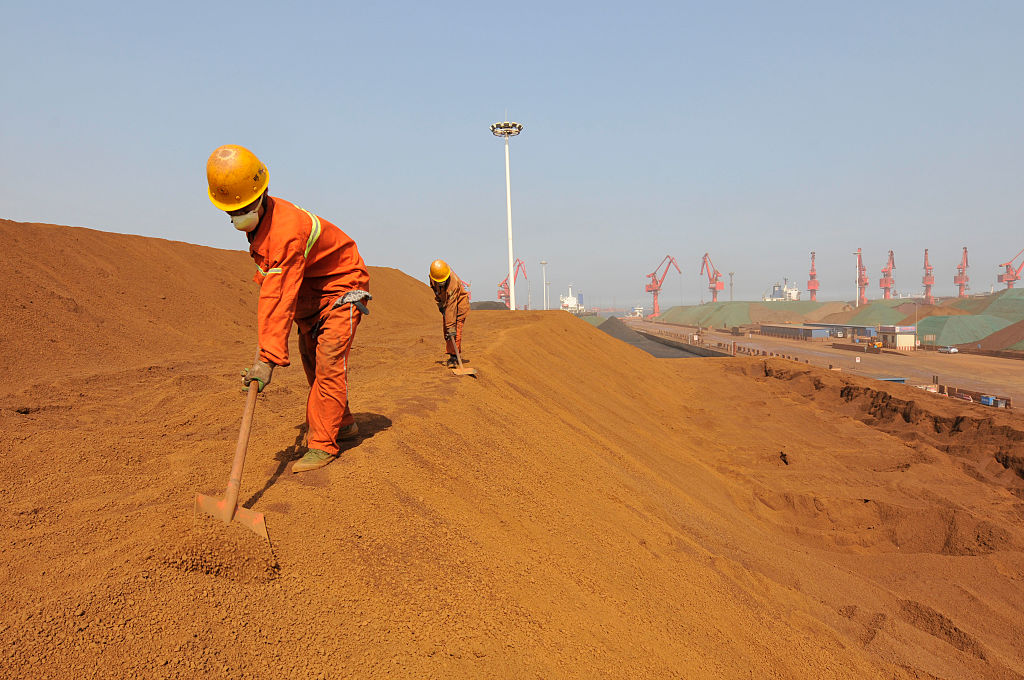
Originally published 3 May 2021.
China’s steel industry is blaming the concentrated ownership of Australia’s iron ore mines for the soaring ore price and is calling for Chinese government intervention.
‘We believe that the supply side is highly concentrated and the market mechanism is not working, so we call for the authorities to play a bigger role in the event of market failure,’ Luo Tiejun, vice president of the China Iron and Steel Association, told an industry conference last week.
The reality is that the market is working well and that the Chinese authorities have much less power to influence it than Luo might imagine.
Astronomical iron ore prices reflect the inefficiency of China’s own iron ore mines rather than any alleged monopolistic behaviour by the major Australian mining companies.
It must be galling to Chinese authorities that, notwithstanding their determination to punish Australia for its many perceived sins, their annual imports from Australia are running at near record levels and appear likely to surpass the $150 billion peak reached in the first half of last year.
The iron ore price has been nudging close to a record US$200 a tonne, more than double the price of a year ago and three times the price expected by the Australian government when it compiled last year’s budget.
The price is delivering fabulous profits to Australian mines and is also boosting Australian government tax revenues. The cost of extracting iron ore is not much more than US$16 a tonne for BHP and Rio Tinto.
In any commodity market, the price is dictated by the highest-cost or marginal supplier. After making allowance for quality and transport, all suppliers of a commodity get the same price in an open market, regardless of what it costs to produce. So, the highest-cost producer is the one that would stop mining if the price were to fall, leaving the market short of supply.
In the iron ore market, the highest-cost producers are all Chinese. China normally takes around 70% of the seaborne trade in iron ore, or around 1 billion tonnes, but it relies on domestic production for a further 900 million tonnes.
However, around three-quarters of China’s domestic production needs a price of at least US$100 a tonne in order to operate, with some mines having much higher break-even thresholds than that. China’s iron ore reserves are low quality and require expensive heat treatment before they can be fed into steel mills. Production peaked at 1.5 billion tonnes in 2015, but has fallen because of the sector’s poor economics and government efforts to stop shallow strip mining, which is environmentally damaging.
While the high operating costs of China’s most marginal mines set a pricing floor, the market has been swept along by demand fuelled by government stimulus spending, both in China and across the world, in response to the Covid-19 pandemic, which has fired steel-hungry construction and consumer goods industries.
Chinese authorities had set an objective of reducing steel production in line with their goal of reducing carbon emissions and particle pollution.
In the heart of China’s steel district in Tangshang, 150 kilometres east of Beijing, mills have complied with orders to lower production, but that has caused a panic among steel buyers and sent the steel price soaring. Steel mills across the rest of China have been ramping up production in order to take advantage of the strong price. China’s total steel production is running at record levels.
The failure of the central authorities’ efforts to shut down inefficient and high-polluting steel mills has been chronic since the price boom of 2009–10 and partly reflects the fact that local steel mills are more responsive to provincial authorities, for whom they are an important source of revenue, than to Beijing.
Historically, the iron ore price tracks the steel price, so the current price boom at least partly reflects the tensions in government policy to control air quality and carbon emissions.
Global iron ore supply hasn’t been especially weak, but it has not responded to the increase in demand both from China and from the rest of the world.
Australia has been supplying about 60% of world iron ore trade, with exports forecast to reach 900 million tonnes this year. China has been buying up what it can from wherever it can get it, including a doubling of its purchases from India. However, at around 30 million tonnes, India is only a marginal supplier.
China’s great hope is that Africa will provide some relief from its dependence on Australia. It is looking at projects in Algeria, Congo and Guinea, with the last the most advanced.
Analysts expect the Simandou project in Guinea, in which Rio Tinto has a stake alongside Chinese state-owned resources group Chinalco, will proceed, with a total cost of around US$20 billion. It is a large and high-grade orebody, although the infrastructure challenge of getting the ore to port is formidable.
China’s Global Times last week declared that ‘the exploitation of the Simandou mine in Guinea, with the participation of a Chinese company, is expected to help cut the heavy reliance on Australia for imports’.
However, the project, which has been stalled for more than a decade amid corruption claims and conflicts between the government and partners, would take several years to complete, and production in the initial phase is expected to be in the region of 100 million tonnes a year, or about two-thirds the output of Australia’s Fortescue Metals Group. It’s not a big enough project to materially transform the global iron ore market or to free China from its dependence on Australia.
The steel association’s demand that the authorities do something about the surging iron ore price mirrors their response to the iron ore price spike in 2008–09, which was generated by Chinese government stimulus spending in response to the global financial crisis. Then, as now, they blamed Australian producers.
The Chinese government was thwarted by the Rudd government in its attempt to have Chinalco take over Rio Tinto, which it thought would give it the ability to keep a lid on iron ore prices.
At some stage, China’s economy will move beyond its heavy reliance on construction as the source of its growth and become more focused on services. That might come as a result of a maturing of its economy or it could be sparked by a debt crisis.
A serious cut in China’s demand for steel and iron ore could see prices plummet to something much closer to the marginal cost of Australian iron ore mines, but such a result wouldn’t come from the interventions demanded by the China Iron and Steel Association.
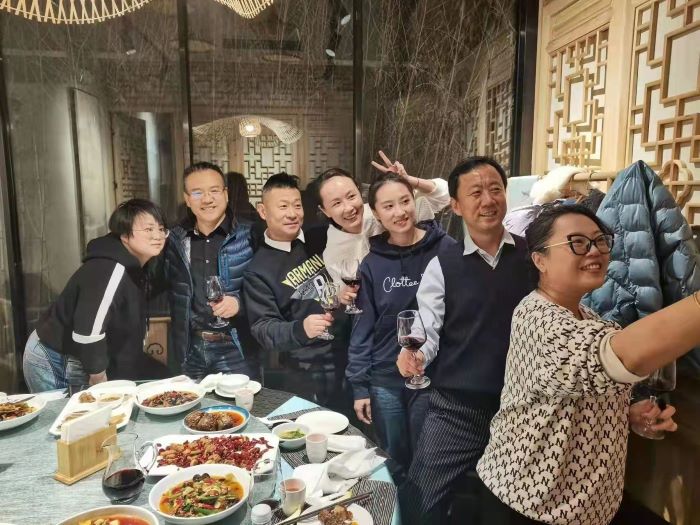
Analysis of footage of tennis star Peng Shuai released by Chinese state media indicates that government officials may have orchestrated the coverage.
On 2 November, Peng used Chinese social-media site Weibo to accuse former Chinese vice-premier Zhang Gaoli of sexual misconduct. The post was removed from the platform within 20 minutes. Following the allegations, Peng’s wellbeing became a concern when officials from the Women’s Tennis Association said they had been unable to contact her. That led to global reports of her possible ‘disappearance’.
The Chinese government has received sustained, high-profile criticism for allegedly silencing her, including calls for the cancellation of the 2022 Beijing Winter Olympics.
Suspicions about her safety and the Chinese Communist Party’s involvement in her silence grew when a ham-fisted email was released by state media outlet China Global Television Network. Said to have been written by Peng, it was sent to WTA chief executive Steve Simon.
The email said Peng was at home resting and that her allegation against Zhang was false. There’s doubt about the email’s authenticity. For example, analysts have noted that the screenshot of the email lacked a date, header or signature but, on the third line, included a cursor, suggesting it was taken before the email was sent or as it was being drafted in a text document.
Chinese state media have since released additional posts purportedly confirming Peng’s wellbeing. Photos of Peng in her house, seemingly shared on her WeChat story, emerged online via state media. These included two of Peng with her cat, presumably taken by a second person, and one selfie-style photo.
On 20 November, Peng was filmed dining at a restaurant linked to the Chinese government in her first public appearance since her allegations were censored. Hu Xijin, editor of the state-run Global Times, tweeted videos showing Peng at the restaurant. Other images and footage were posted on Twitter, which is blocked in China, and have not been widely reported inside China’s ‘Great Firewall’.
Another video released by Hu showed Peng at the opening ceremony of the Fila Kids Junior Tennis Challenger Finals in Beijing.
These videos mark Peng’s only public appearances and show that she has been in the constant company of at least three government officials when in public. Such sightings being reported only by state media, rather than on Peng’s personal account, have added to suspicions.
This is one of the most severe blocks by the state in recent years, with information released for international eyes only. Censorship was most obvious during CNN’s broadcast about Peng’s disappearance, when the feed in China ‘lost signal’.
Peng’s only other appearances have been on video calls with the International Olympic Committee. She was seen talking to IOC president Thomas Bach, Athletes’ Commission chair Emma Terho and an IOC member in China, Li Lingwei, in November. She claimed then to be ‘safe and well’. A second video call was reported on 2 December, though this appears to have been a private discussion of support options for her, rather than a discussion of the allegations.
The authenticity or otherwise of these videos is key to assessing if the CCP and state media were involved in a cover-up. Many believe they are intended as ‘proof of life’ to debunk claims that Peng is under the authorities’ control. Accordingly, it’s worth establishing the identities and backgrounds of those she’s pictured with.
Two videos were released of Peng purportedly ‘having dinner with her coach and friends in a restaurant’, according to Hu. The first shows Peng sitting with a group of people chatting at a table. Multiple references are made to the date. Zhang Junhui, China Open’s tournaments director, asks, ‘Isn’t tomorrow November 20?’ Someone corrects him, saying that tomorrow will be the 21st, and he then repeats that date.
The second video shows the entrance of the restaurant with the date partially in view on a cleaning sign. It then cuts to Peng entering the building with Ding Li. Ding is president of the sports division of Beijing-based lighting and display company Leyard, as well as the legal representative and senior executive of German World Sports (Beijing), also known as Global-D Sports.
Li Xiaobin, secretary of the party branch and president of China Open, was also at the table. Three women are visible but have not yet been positively identified, which may indicate that they’re Peng’s friends rather than officials. Hu claimed Peng was with her coach, yet no reference to any of these individuals coaching her exists.
These videos were accompanied by others of the restaurant meeting, including one from Ding. In a tweet, he refers to the location as the Beijing Yibin Guest House, which is minutes away from the government’s Zhongnanhai HQ and Ministry of State Security and adjacent to Tiananmen Square. In another, he refers to the ‘Beijing Wanghong Restaurant’, referencing its reputation as a popular eatery for officials and influencers.
Open-source analysis of the footage, matched with images of the restaurant (largely provided by the public via reviews), confirms it was the Yibin Guest House. Public records reveal that the restaurant’s primary shareholder is the People’s Government of Yibin City, Sichuan Province. The building is part of a government-owned network of accommodation and working space for officials and dignitaries.
The awkward conversation, and the frequent references to the date, spurred suspicions that the meal was staged.
Additional images were posted on Twitter and Weibo by Ding (@ li_ding1, the first tweet from his account in more than four years). Peng and Ding appear to be long-acquainted, with Ding sharing an image of the pair drinking wine 10 years earlier. Another image indicates they’ve known each other for at least 12 years. Ding has insisted that Peng is not constrained.

Ding Li’s Weibo post highlighting his history of knowing Peng Shuai. The low engagement on the post is noteworthy given Peng’s prominence, suggesting that it may have been censored or unlisted within China.
Ding’s Twitter presence has drawn suspicion, including his criticism of the WTA for its public involvement in calling out Peng’s disappearance.
Approached by the BBC, Ding vehemently denied that there had been a sexual assault and said there was no investigation into Peng’s allegations. He has also spoken on Peng’s behalf multiple times, including saying that she declined the offer to be interviewed by the British broadcaster due to her life being ‘significantly impacted’ by calls for interviews.
A third video, posted by Shen Shiwei, international news editor at CGTN and a Global Times columnist, shows eight people sitting at the table, six of whom are facing the camera. The seventh person, believed to be Ding, is seen briefly from the rear. An eighth person is seen only in a reflection; they don’t appear in any of the images posted by Ding. The cameraman, described by Shen as Peng’s friend, is unidentified. This individual may be present at other events attended by Peng and is a key person to identify. A ninth person is seen crouched in front of the cameraman.

Frame of video posted by Shen Shiwei reveals an eighth ‘friend’ at the table (blue rectangle). A ninth person filmed the encounter, and a tenth person is seen crouching in front of the cameraman. These individuals were not visible in any of the other videos and the latter two do not appear to have eaten at the table.
Zhang, Peng, Li and Ding were together at the tennis finals the next day.
Shen claimed that Peng contacted Simon to criticise the 2 December suspension of tournaments in China. Shen has regularly acted as a spokesman for Peng, but his comments have not been verified.
It has been claimed, though not verified, that the authorities have removed Peng’s photograph from a wall in the National Tennis Training Centre.
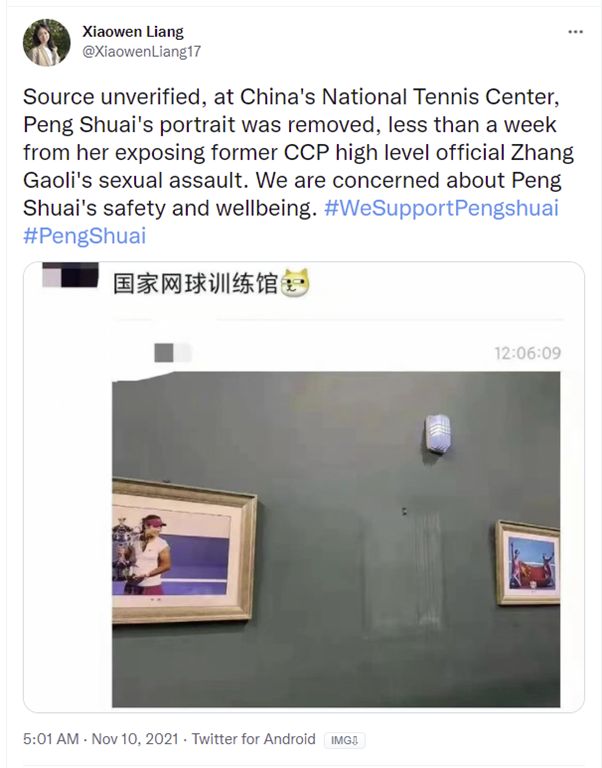
Analysis of the images and footage leaves unanswered questions about Peng’s situation. However, the awkward presentation and the unnatural emphasis given to the timing of encounters suggest they may have been staged to ease international pressure on the China Open and the government.
The censorship of Peng’s account, coupled with censorship of the larger story on the Chinese internet, shows these events were for international eyes only, in the face of mounting pressure on officials to demonstrate Peng’s autonomy.
Peng has now told a Chinese-language media outlet in Singapore that she had never accused anyone of sexually assaulting her. She said comments she made on social media had been misunderstood. ‘First, I need to stress one point that is extremely important, I have never said or written that anyone has sexually assaulted me,’ Peng said.
The WTA later issued a statement saying it still wanted a full, fair and transparent investigation, without censorship, into Peng’s original allegation.
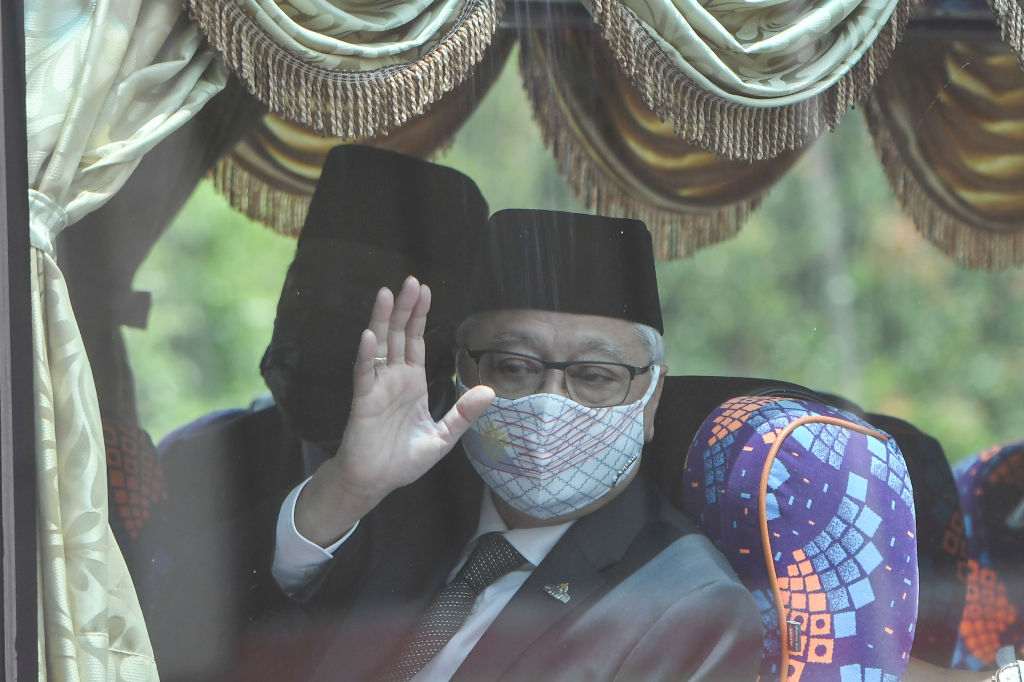
Just two years after the last one was published, Malaysia has launched a new foreign policy framework, aptly titled ‘Focus in continuity: a framework for Malaysia’s foreign policy in a post-pandemic world’. With the challenges brought about by both the Covid-19 pandemic and the brewing great-power contest in the Indo-Pacific, Malaysia may have felt a need for a greater sense of direction. The framework takes note of the resulting disruptions but traverses a rather safe route by avoiding any major detours from the previous framework.
Launched on 8 December, the framework is an official policy document that covers many foreign policy priorities for Malaysia. In addition to addressing the negative impact of the pandemic and rising regional tensions, it serves as a guiding document for Malaysian policymakers and practitioners to deal with a range of traditional and non-traditional security areas such as climate change, downward trends in globalisation and multilateralism, and the reversal of gains made on democratic and human rights fronts—particularly in Southeast Asia.
More importantly, it highlights the principles and approaches that Malaysia will be adopting. First, it pledges continued adherence to the principle of non-alignment, which keeps Malaysia’s diplomatic manoeuvring space wide but also signals the country’s reluctance to be drawn into the ongoing regional rivalries.
A second and equally significant aspect is its continued support for the rules-based liberal international order, with some proposed tweaks such as reforms to the UN Security Council, and greater sincerity on and support for multilateralism. Human rights is identified as a key guiding principle for Malaysia—which is hardly surprising since it has just been elected to the UN Human Rights Council, a position it will hold for the period 2022–2024. The framework clearly states where Malaysia’s priorities are: vulnerable groups, women, youth and addressing the impact of business and climate change on human rights. More collaborative action is likely to occur on these fronts with partners including Qatar, the United Arab Emirates, India and Kazakhstan.
The list of foreign policy priorities and strategies has been expanded, with more elucidation on existing ones in comparison to the previous iteration. For instance, the new framework shows a sense of responsibility and urgency in areas such as revitalising Malaysia’s links to the global economy, which have been severely curtailed due to bans on international travel and disruptions to international trade; pursuing health diplomacy to overcome public health challenges; and developing domestic vaccine production capacity.
Other priorities include facilitating the country’s digital economy goals, which include addressing regional digital economic issues, and attracting high-technology foreign investment into the country. Cultural diplomacy, which has been constrained in the past year, remains a permanent feature in Malaysia’s foreign policy toolbox. Strategies include promotion of cultural and sports diplomacy, though such efforts could be undermined by incidents like the recent axing of a world squash event due to Malaysia’s decision to not issue visas for Israeli competitors.
One area that the framework remains relatively silent on is the ongoing regional rivalry in the Indo-Pacific, a point we highlighted recently in our critique of Malaysia’s foreign and security policies. For the most part, the document skirts contentious aspects of this critically important issue, even though there’s no doubt that policymakers understand the impact these regional rivalries have on Malaysia, which lies at the centre of these developments, both literally and figuratively.
Certainly, Malaysia’s foreign policy interests go beyond the Indo-Pacific region. Yet the Indo-Pacific and the major developments there are of immediate and top concern. This could be a part of a cautious attempt not to flare up the US–China polarisation of the region. China looms large over Southeast Asia, which has undoubtedly shaped policy responses from countries across the region. Malaysia’s own conservative assessment of how China would behave with its smaller neighbours in case of heightened US–China rivalry is another critical factor.
The introduction of this new framework is timely. It comes at a time when Malaysia, according to the Lowy Institute’s Asia Power Index, has fallen in its power-projection capabilities. It is currently ranked 11th out of the 26 selected Indo-Pacific countries for comprehensive power, down a ranking, having been overtaken by Indonesia. Its overall score of 18.3 out of 100 is a 2.4-point or 11% drop from the previous year. In fact, Malaysia performed poorly in most of the areas measured by the index, with diplomatic influence experiencing the biggest drop of all (–8.9 points). Even in areas in which it usually performs best, like cultural influence, Malaysia experienced a 4.0-point drop from last year. It’s hoped that the new policy will address this fall.
Indonesia’s rise in the index is an outcome of President Joko Widodo’s bold and proactive foreign policy moves. Even though Indonesia and Malaysia have similar approaches on regional and international issues, it’s the clear articulation of preferences and priorities that is increasingly making the difference. From climate change to the Natuna Islands, Indonesia has been vocal about its rights and concerns.
Nevertheless, Malaysian foreign policymakers believe that the document’s guiding principles, approaches and strategies remain relevant. For instance, in launching the framework, Prime Minister Ismail Sabri Yaakob said that it ‘will serve as a reminder and guidance to all Malaysian foreign affairs practitioners that regardless of the evolving regional and international architecture, the cardinal principles of Malaysia’s foreign policy will remain consistent and unchanged’.
The new framework, like Malaysia’s current defence policy, essentially reflects a non-aligned policy with (albeit diminishing) elements of a hedging strategy. It is perhaps the genius of Malaysia’s foreign and defence policymakers that they have been able to continue to keep us all guessing. However, if Malaysia wants to stay ambiguous vis-à-vis the competing superpowers, adoption of opposite and counteracting measures along with a foolproof fallback position is a must. There is a smattering of evidence of this in this latest foreign policy framework but not enough.
Hedging strategies like Malaysia’s can sometimes fail or, in the case of Southeast Asia, have variable effectiveness. Malaysia may eventually find itself having to make a choice between the superpowers. It has to decide too whether to act as an ‘interlocutor for regional peace’ or a ‘smooth self-defence operator’. As one of us recently commented, ‘Hedging is a luxury middle powers cannot afford for long, especially when the stakes are high, superpowers are pushy, and the rivalry is intensifying.’
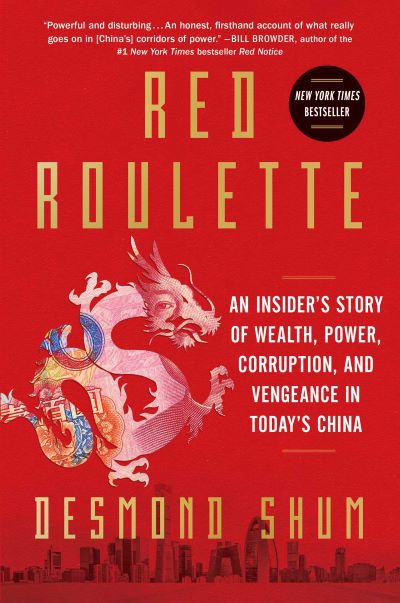
A week before Red roulette was due to be published, in September 2021, its author Desmond Shum received two phone calls from his ex-wife Whitney Duan, who had been detained by Chinese authorities and hadn’t been heard from in four years. Duan told Shum that she had been temporarily released and might be reincarcerated at any moment, and asked him to cancel publication. She reminded him of an old Chinese warning: ‘No good comes to those who oppose the state.’ Having no confidence that Duan would be freed, Shum went ahead and published.
Shum’s book is a riveting personal account of the rise and occasional fall of China’s super-rich. However, it is also much more: it offers a detailed case study of the nexus between money and politics at the very top of China’s power structure. Shum wrote the book to set the record straight for his son, but decided that the story should be made public.
The book’s cast reads like a who’s who of China’s red aristocracy, including the families of retired Chinese Communist Party general secretary Jiang Zemin, retired premier Wen Jiabao, and a raft of other senior officials and their relatives. As Shum describes it, at that level most deal-making is based on mutual understanding, relying on interlocutors, without written records or contracts. Deals are wrapped in an intricate web of holdings to conceal the identity of the real owners.
From a business perspective, Shum and Duan were the ideal couple. He came from a middle-income background, was educated in Hong Kong and the US, and cut his teeth investing in China in the go-go 1990s. Duan’s roots were more modest, and she quickly realised that to get ahead she had to have the right connections, at the highest possible level.
Following extensive networking, Duan managed to become the ‘trusted friend’ of Zhang Beili or ‘Auntie Zhang’, the wife of premier Wen, whom she fronted for in several public listings and other deals. They were close, but ultimately, according to Shum, like ‘the fish that clean the teeth of crocodiles’.
Expanding her network, Duan also formed personal relationships with Wang Qishan, then a vice premier and currently vice president, and Sun Zhengcai, an ambitious young politburo member and until recently a contender to succeed Xi Jinping.
While things were going well, the couple led a charmed life, frequently accompanying Auntie Zhang on trips abroad. Jetting to France with the chief executive of construction giant Evergrande, the entourage ran up a wine bill of US$100,000 at a single sitting. Ironically, in October the heavily indebted Evergrande had to sell its corporate jets to stave off financial collapse.
Duan’s close relationship with key officials gave her access to inside information about party power struggles, including how Xi managed to eliminate adversaries and sideline potential successors. Shum’s most serious allegations are cautiously worded, presumably on the advice of the publisher’s lawyers.
Crunch time came in October 2012, when The New York Times published a front-page article on the hidden wealth of Wen’s family. Auntie Zhang had made the mistake of placing shareholdings in her mother’s name, which made them easy to trace. The article identified Duan as the family fixer, and inevitably relations cooled.
The revelations were made just weeks before the CCP congress that would confirm Xi as its new leader, and there was speculation that the information was leaked by supporters of Xi’s arch-rival Bo Xilai in retaliation for Wen’s supporting his ouster earlier in the year.
Sensing that all was not right, Shum eventually left China, while Duan continued to work on a luxury hotel project in Beijing. In October 2017, Sun, who had risen to party secretary of Bo’s former bailiwick, Chongqing, was detained. The charge was corruption, but there was speculation that he was being penalised for not dismantling Bo’s support network. A few weeks later, Duan and several of her assistants disappeared.
Xi’s decade-long anti-corruption campaign has snared up to 200,000 officials and businesspeople, including many of his competitors and enemies.
Chinese authorities are casting an increasingly wide net. In 2015, five Hong Kong booksellers disappeared, including one who was apparently abducted while travelling in Thailand, and later showed up in detention in China, charged with trafficking banned books. In 2018, somewhat surprisingly, Interpol’s Chinese president, Meng Hongwei, was detained while visiting China and charged with bribery. And most recently there is the case of Peng Shuai, the international tennis star.
In China, having the right connections has long been the best way to get ahead. Shum provides a stark reminder that knowing too much is also the quickest way to disappear into the country’s detention system.
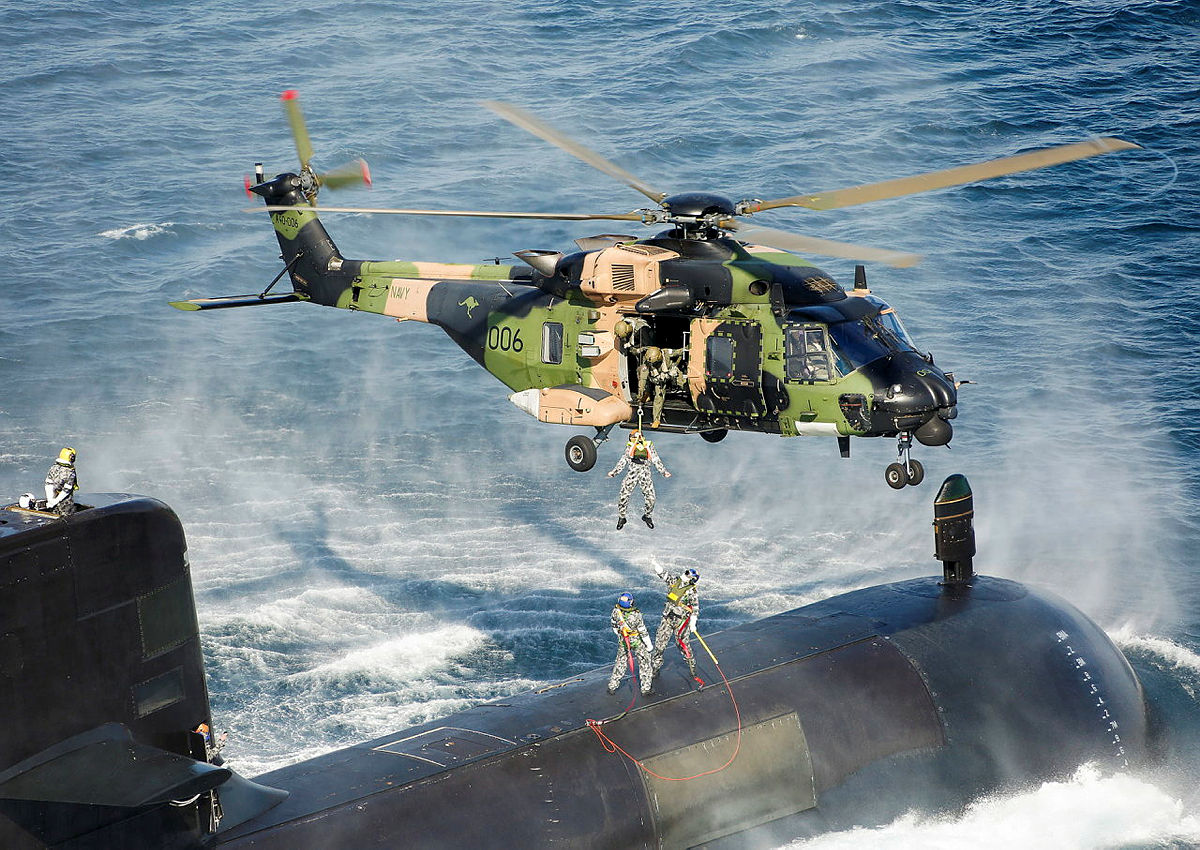
The sad saga of the MRH-90 Taipan helicopter has been running for a long time. Back when I worked in the Department of Defence, we used to occupy ourselves from time to time calculating how much money the taxpayer would save in the long run if we just walked away from the MRH-90 utility helicopter and bought Black Hawk helicopters instead. The answer was a lot. And the sooner you did it, the more you’d save, by avoiding sinking more acquisition dollars into the MRH-90 and realising the substantially lower operating costs of the Black Hawk. But even though those numbers were shared with Defence’s senior decision-makers, the department couldn’t bring itself to take that step.
Now, however, after almost the entire $3.7 billion acquisition budget has been spent, the government has announced what should have been done long ago: it will retire the MRH-90 fleet early and acquire a new fleet of Black Hawks. That’s a good call. While on paper the MRH-90 has more capacity than the Black Hawk, in real life that’s irrelevant if the helicopter isn’t flying.
So, what’s changed? At some level it’s about China, just as everything in defence and strategic policy today is about China, but not in the way you might expect. Neither the MRH-90 nor the Black Hawk will have a deterrent effect in the way nuclear-powered submarines or long-range strike missiles will.
The first way that it’s indirectly about China is that Defence Minister Peter Dutton is trying to impart a sense of urgency to Defence’s lethargic acquisition system to meet Australia’s deteriorating strategic environment. He has also said he’s going to hold industry to account for underdelivery. The MRH-90 project has been going since 2004 and still hasn’t delivered what it was meant to. The days when projects could noodle along because we had all the time in the world are gone.
The second way is that the new strategic climate means there’s more willingness to accept the poor optics of retiring a $3.5 billion investment early—just as the government was willing to accept what will likely be a sunk cost of more than $3 billion once all is said and done in the cancelled Attack-class program.
The third way is that Defence is suddenly rich in cash—and that’s also because of China. A key reason that the government and Defence hadn’t replaced the MRH-90 is that, even though there would have been long-term savings through the lower operating cost of the Black Hawk, there would have been a big short-term acquisition cost. A private company could manage that by borrowing and paying it back with the operating savings (or the revenue raised by operating the new asset). Defence can’t do that; each year it has to live within its means. Buying a replacement for the MRH-90 would have meant deferring or cancelling another priority. And with Defence’s acquisition program historically oversubscribed, that would have had a ripple effect of further delays on other programs.
Now Defence has the opposite problem: it’s got too much cash. That’s partly due to the government increasing the defence budget (again, largely due to China), with much of that flowing into the acquisition budget. That steep increase combined with the impact of Covid-19 on industry and supply chains meant that last year Defence underspent its acquisition budget by around $1 billion. That’s likely to occur again this year, with further increases built into the budget and the pandemic lingering.
But the cash bounty is also due to the cancellation of the Attack class in favour of nuclear-powered submarines (and that’s definitely about China). Defence was planning to spend about $1 billion this year on the Attack class. That was to grow over the next few years to $1.5 billion and potentially $2 billion a year. While SSNs will cost more overall than the Attack class, little SSN-related spending will occur in the next few years. In the public sector it’s ‘use it or lose it’. In short, Defence now has the cash to get Black Hawks.
And there’s potentially other sources of cash to put towards them. One problem with the MRH-90 was the restriction on its ability to perform the special forces role, pushing Defence to investigate a dedicated fleet of light helicopters specifically for special forces. That requirement may now be redundant if the new Black Hawks can do that job.
What does the decision to buy off-the-shelf American helicopters mean for Australian industry, particularly coming hard on the heels of the cancellation of the Attack class which left a lot of Australian companies high and dry? I don’t think it means the government is walking away from Australian defence industry, but its sense of urgency is shifting its policy. Since the Coalition was elected in 2013, the industry pendulum has swung from the ‘Abbottist’ view that the defence budget is not an industry support program and we should go to the global market for capability to an unstated policy that everything that can be done in Australia will be done in Australia.
The pendulum is swinging back a little. The Howard government’s original decision to buy the MRH-90 went against Defence’s preference for the Black Hawk and was made due to the jobs involved in local assembly. But it’s been another case that shows that assembling systems designed overseas with largely overseas components doesn’t necessarily deliver better capability or make the system any easier to sustain. The reassessment of the balance of priorities between local jobs and capability is also being driven by the new realism created by China’s behaviour. Hopefully, we’ll reach that happy middle ground where the government will support Australian defence industry when it makes sense to do so but continue to buy off the shelf overseas when there’s the need and the opportunity to acquire capability quickly.
It’s possible that the Black Hawk decision will be the first of several in which Defence puts its embarrassment of riches to use in making some rapid off-the-shelf purchases overseas. And as we all know, the real money for local industry comes through sustaining those systems for the decades they’re in service.
A final note. While it may be tempting to hang on to the MRH-90 in some kind of disaster-relief or bushfire-fighting role, that siren song must be avoided. The MRH-90 has been costing $35,000 per hour to operate. Last financial year that ballooned to $50,000 and it was probably the final straw. Even if that could be halved by stripping out military capabilities, it would still be orders of magnitude more than a civilian firefighting or emergency services helicopter. Despite the sunk cost, trying to repurpose the MRH-90 will merely extend the drain on resources. We’ve made the decision; walk away, don’t look back.
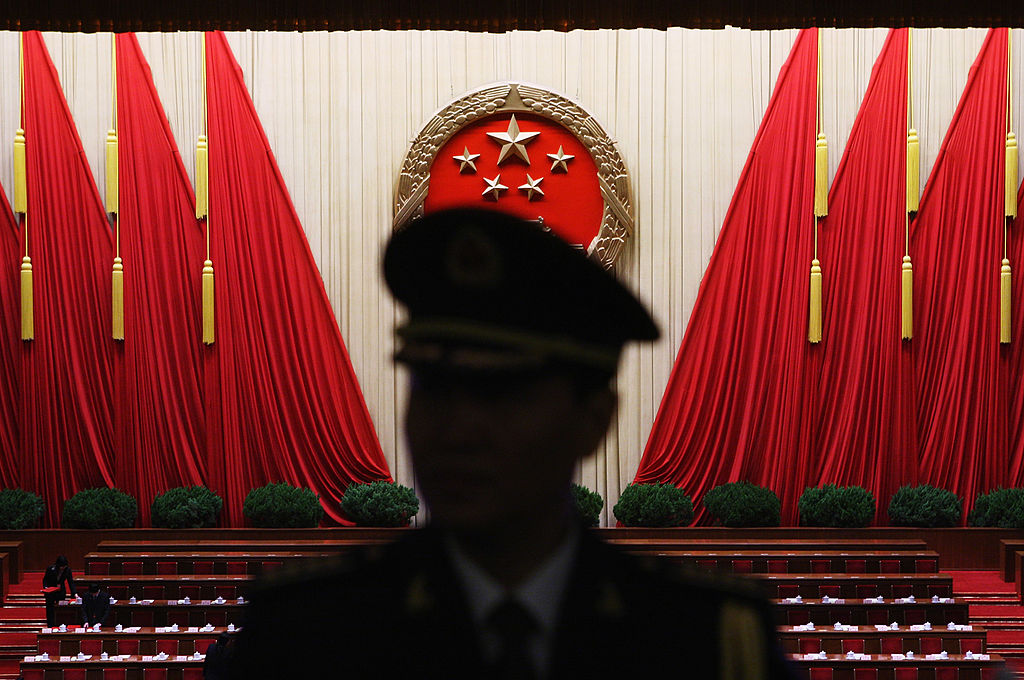
As the world’s largest, strongest and longest-surviving dictatorship, contemporary China lacks the rule of law. Yet it is increasingly using its rubber-stamp parliament to enact domestic legislation asserting territorial claims and rights in international law. In fact, China has become quite adept at waging ‘lawfare’—the misuse and abuse of law for political and strategic ends.
Under ‘commander-in-chief’ Xi Jinping’s bullying leadership, lawfare has developed into a critical component of China’s broader approach to asymmetrical or hybrid warfare. The blurring of the line between war and peace is enshrined in the regime’s official strategy as the ‘three warfares’ (san zhong zhanfa) doctrine. Just as the pen can be mightier than the sword, so too can lawfare, psychological warfare and public-opinion warfare.
Through these methods, Xi is advancing expansionism without firing a shot. Already, China’s bulletless aggression is proving to be a game-changer in Asia. Waging the three warfares in conjunction with military operations has yielded China significant territorial gains.
Within this larger strategy, lawfare is aimed at rewriting rules to animate historical fantasies and legitimise unlawful actions retroactively. For example, China recently enacted a land border law to support its territorial revisionism in the Himalayas. And to advance its expansionism in the South and East China seas, it enacted a coastguard law and new maritime safety regulations earlier this year.
The new laws, authorising the use of force in disputed areas, were established amid rising tensions with neighbouring countries. The border law comes amid a military stalemate in the Himalayas, where more than 100,000 Chinese and Indian troops have been locked in standoffs for nearly 20 months following repeated Chinese incursions into Indian territory.
The coastguard law, by treating disputed waters as China’s, not only violates the United Nations Convention on the Law of the Sea; it also could trigger armed conflict with Japan or the United States. The land borders law likewise threatens to spark war with India by signalling China’s intent to determine borders unilaterally. It even extends to the Tibet-originating transboundary rivers, where China proclaims a right to divert as much of the shared waters as it wishes.
These recent laws follow the success of the three warfares strategy in redrawing the map of the South China Sea—despite an international arbitral tribunal’s ruling rejecting Chinese territorial claims there—and then swallowing Hong Kong, which had long flourished under democratic institutions as a major global financial centre.
In the South China Sea, through which around a third of global maritime trade passes, Xi’s regime has stepped up lawfare to consolidate Chinese control, turning its contrived historical claims into reality. Last year, while other claimant countries were battling the Covid-19 pandemic, Xi’s government created two new administrative districts to strengthen its claims over the Spratly and Paracel islands and other land features. And in further defiance of international law, China gave Mandarin-language names to 80 islands, reefs, seamounts, shoals and ridges, 55 of which are fully submerged.
The Hong Kong National Security Law, enacted in mid-2020, is a similarly aggressive act of lawfare. Xi has used the law to crush Hong Kong’s pro-democracy movement and rescind the guarantees enshrined in China’s UN-registered treaty with the United Kingdom. The treaty committed China to preserving Hong Kong citizens’ basic rights, freedoms and political self-determination for at least 50 years after regaining sovereignty over the territory.
The strategy’s success in unravelling Hong Kong’s autonomy raises the question of whether China will now enact similar legislation aimed at Taiwan or even invoke its 2005 Anti-Secession Law, which underscored its resolve to bring the island democracy under mainland rule. With China escalating its psychological and information warfare, there’s a real danger that it could move against Taiwan after the Beijing Winter Olympics in February.
Xi’s expansionism hasn’t spared even tiny Bhutan, with a population of just 784,000. Riding roughshod over a 1998 bilateral treaty that obligated China ‘not to resort to unilateral action to alter the status quo of the border,’ the regime has built militarised villages in Bhutan’s northern and western borderlands.
As these examples show, domestic legislation is increasingly providing China with a pretext to flout binding international law, including bilateral and multilateral treaties to which it is a party. With more than one million detainees, Xi’s Muslim gulag in Xinjiang has made a mockery of the 1948 Genocide Convention, to which China acceded in 1983 (with the rider that it doesn’t consider itself bound by Article IX, the clause allowing any party in a dispute to lodge a complaint with the International Court of Justice). And because effective control is the shibboleth of a strong territorial claim in international law, Xi is using new legislation to undergird China’s administration of disputed areas, including with newly implanted residents.
Establishing such facts on the ground is integral to Xi’s territorial aggrandisement. That is why China has taken pains to create artificial islands and administrative districts in the South China Sea, and to pursue a militarised village-building spree in Himalayan borderlands that India, Bhutan and Nepal consider to be within their own national boundaries.
Despite these encroachments, very little international attention has been given to Xi’s lawfare or broader hybrid warfare. The focus on China’s military build-up obscures the fact that the country is quietly expanding its maritime and land boundaries without firing a shot. Given Xi’s overarching goal—to achieve global primacy for China under his leadership—the world’s democracies need to devise a concerted strategy to counter his three warfares.
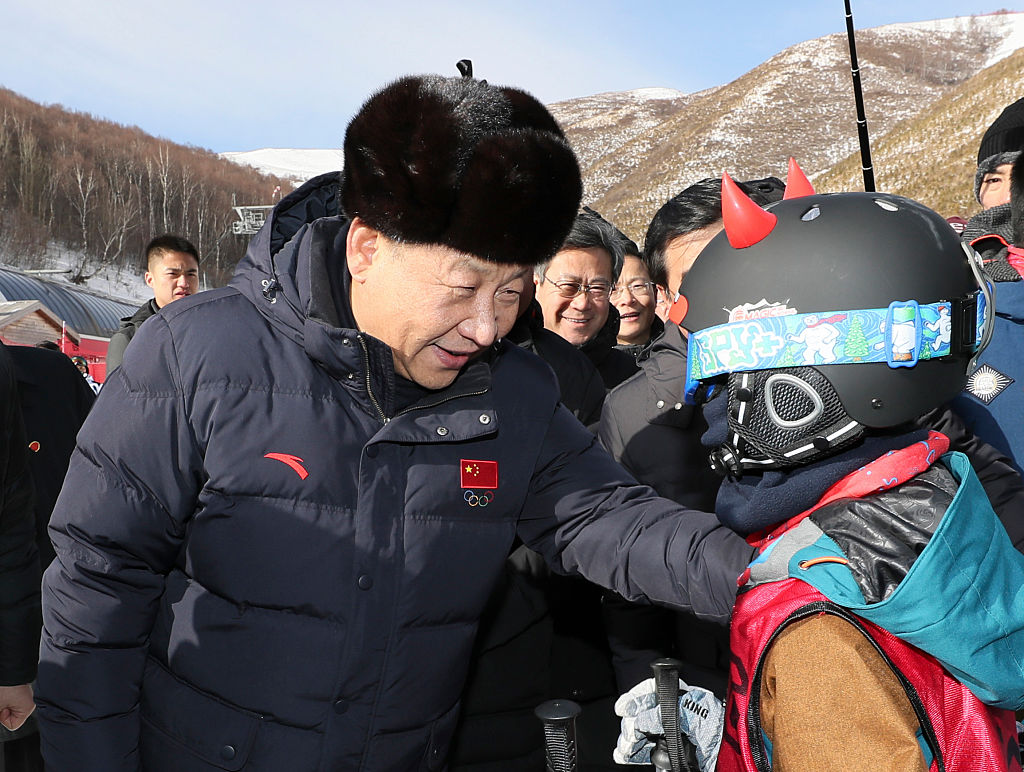
Should Australian officials and dignitaries travel with our athletes to Beijing in February for the Winter Olympics? Check the Department of Foreign Affairs and Trade’s Smartraveller site, which says that Chinese authorities have ‘detained foreigners on grounds of “endangering national security”’ and that ‘Australians may be at risk of arbitrary detention’.
Surely China’s Ministry of State Security wouldn’t detain people during the Games? Good luck if you think a sporting event will protect you. These are going to be the most stage-managed Olympics in history. Anyone who threatens to dent Beijing’s gloss will be at risk of rough handling.
US President Joe Biden has done the right thing in deciding on a ‘diplomatic boycott’ where the athletes participate but officials and politicians stay away. In the words of White House Press Secretary Jen Psaki, the Beijing Olympics ‘cannot be business as usual’ because ‘standing up for human rights is in the DNA of Americans’.
Given the Chinese Communist Party’s systematic repression of millions of Uyghurs, the crackdown in Hong Kong, the arbitrary arrests of other nations’ citizens including two Australians and the disappearance from public life of Chinese tennis star Peng Shuai, it’s surprising that there hasn’t been a more concerted global effort to totally boycott the Olympics.
It’s disappointing that the Biden administration didn’t make more of an effort to build an international consensus for a boycott. A coordinated international response would have pressured Beijing and perhaps succeeded in moderating the draconian restrictions China is putting on international press coverage of the Games.
Now, Beijing will redouble efforts to dissuade other countries from supporting a diplomatic boycott with threats of taking resolute countermeasures against ‘blatant political provocation and a serious affront to the 1.4 billion Chinese people’.
That said, the Australian government should agree to a similar diplomatic boycott and do nothing that adds lustre to Beijing’s political manipulation of the Games.
For Chinese President Xi Jinping, there is only one audience that matters, and that’s the people of China, who determine whether the CCP has sufficient legitimacy to sustain its hold on power.
Expect an Olympics unlike any in the post-war period. These games will be engineered to present an image of China that, as Xi announced in July on the centenary of the CCP, ‘is one of a thriving nation that is advancing with unstoppable momentum toward rejuvenation’.
To support that goal, the international media will be largely kept away from the Games. Coverage will be tightly managed to avoid even the slightest blemish. Under the guise of Covid-19 management, international visitors will be mostly absent.
Chinese audiences will be hand-selected party loyalists. Xi will dominate the ceremonial moments, benignly presiding over tightly choreographed flag-waving and applause.
All that remains, as Xi has described, is that China win medals: ‘[O]ur young people should make it their mission to contribute to national rejuvenation and aspire to become more proud, confident, and assured in their identity as Chinese people.’
If ever there was a moment for the world’s athletes to ‘take the knee’ in protest at the racism inherent in the CCP’s repression of Uyghur and Turkic minorities in western China, it should be at these Games.
Of course, the International Olympic Committee will presumably cite rule 50 of the Olympic Charter preventing athletes from taking part in any ‘demonstration or political, religious or racial propaganda’.
The IOC maintains that rule 50 is to ‘keep the field of play, the Olympic Village and the podium neutral and free from any form of political, religious or ethnic demonstrations’.
Except that, from the lighting of the torch in the Olympic stadium to the final closing ceremony, the whole show will be designed, broadcast, written and spoken about, memorialised and propagandised as a triumph of the CCP’s will and of Xi’s leadership.
One thing that might penetrate the propaganda veil in ways that ordinary Chinese people could see would be if athletes found ways to subtly show that they are there to celebrate sport, not be subsumed into a CCP disinformation campaign.
My hope is that athletes will take the knee or raise a fist or wear a black armband or look the other way when the flags are raised at medal ceremonies. In so doing they will be exercising the kinds of liberties that Chinese citizens are not permitted to show but are well able to recognise.
If enough athletes take this approach, the IOC will hardly be able to sanction them all.
An interesting Olympic footnote is worth sharing here. Peng Shuai’s allegation of sexual coercion was made against Zhang Gaoli, the most senior party figure to face such a public allegation of sexual assault.
Zhang reached the rank of vice premier and retired in 2018 after steering Olympics preparations for a couple of years. He has not been heard of since Peng’s online denunciation.
Zhang, it should be noted, was an acolyte of Jiang Zemin, a leader whose supporters Xi has assiduously purged since 2012. After the Olympics, watch what happens to Zhang. Xi could use this as a new catalyst for an anti-corruption purge of party positions. He is adept at turning others’ misfortunes to his own advantage.
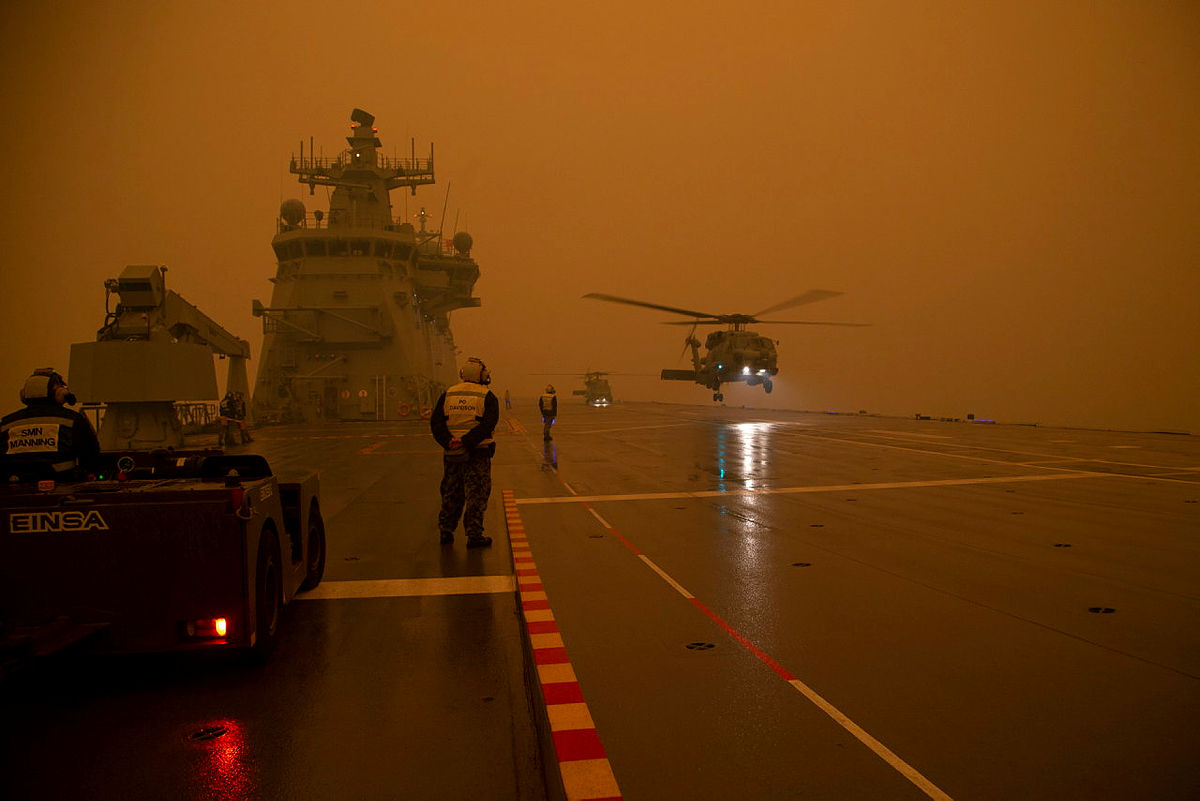
Two recent foreign policy developments in Canberra are shaping Australia’s 21st-century national security agenda. The first is the AUKUS agreement, which has at its core a deep and strategically courageous commitment to deterring China’s malign, hegemonic and military aspirations in the Indo-Pacific and around the world. Given this context, continuing to protect our way of life by generating an Australian Defence Force that sustains competitive advantages, in terms of our men and women in uniform and the technical systems they employ alongside our allies, from seabed to space, is the right thing to do.
The second development has been Australia’s slow approach to reducing the global economy’s carbon footprint to zero, as demonstrated by its contribution at COP26 and refusal to increase our 2030 emissions reduction targets.
Governments need to apply clear scientific evidence in speaking truth to Australian voters, especially those in the mining and agricultural sectors, about the human-made climate catastrophe unfolding around us and the adverse impact it will increasingly have on our way of life.
It’s hard to reconcile the contrasting displays. Shaping a constructive change of behaviour in Beijing is ‘in the national interest’, and most Australians agree. Exporting huge volumes of coal and gas is also said to be in the national interest. Most Australians disagree.
The term means different things to different people, but it boils down to the values underpinning democratic governance and individual freedom, an independent judiciary and media, universal human rights, and a free and open global trading system. Herein lies the rub. The same national-interest calculus around the China challenge that has driven significant investments in Australian defence capability, if applied to the climate challenge, should also have led Canberra to double-down on policies and investments to reduce carbon emissions.
The global socioeconomic pressures building in a bow-wave ahead of the earth’s warming are as much a challenge to Australia’s national interest as are China’s attempts to apply its authoritarian system to undermine and reorient global governance to its advantage. Surely there’s an appreciation in Canberra that the ADF’s focus in the years ahead will increasingly be pulled towards climate-driven domestic and regional disaster responses. This will inevitably dilute the ADF’s ability to sustain perishable higher-end combat capabilities. This tension won’t be resolved by military planners viewing the two threats as separate and sequential. In fact, they are integrated, concurrent and growing.
The US Army recently named China as it’s ‘pacing challenge’ for the foreseeable future. This is a foot-stomping acknowledgement of the threat China poses to the rules-based international order, upon which the vital geoeconomic interests of America and like-minded democracies like Australia stand. Even more important, though, was the declaration by President Joe Biden earlier this year that climate change poses an ‘existential threat to humanity’.
There’s a compelling argument to be made that the threat to the Australian national interest posed by climate change is much greater than that posed by the People’s Liberation Army, even though it has made great strides under Xi Jinping in its all-domain ‘intelligentised’ warfare capabilities and may have achieved a leap-ahead advantage in some disruptive technology and weapons capability areas.
Still, the centre of gravity for the CCP lies in the support it receives from the Chinese people. That support will inevitably weaken when the hundreds of millions of Chinese lifted out of poverty by China’s extraordinary economic rise find themselves adversely affected by the increases in drought, floods, fires, coastal inundation, fish protein collapse and mass migration pressures that will come if global warming tips past 2.0°C, as the Intergovernmental Panel on Climate Change predicts it will unless urgent global emergency response measures are taken now.
In addition to the hugely disruptive climate-related tipping points predicted to occur soon (if not already underway) at the poles, in the Himalayas and in the North Atlantic, another tipping point before 2050 could occur at that moment when the CCP realises it is unable to deploy the PLA for any substantive expeditionary force projection mission because it has become fixed internally on domestic, climate-related, large-scale crisis mitigation and the survival of the party.
A similar future could await us in Australia, as explained in the recent Australian Security Leaders Climate Group’s Missing in action report. Unless collective steps are taken now to limit global warming as close to 1.5°C as possible, the ADF will find itself repeatedly fighting the battle of the black summer. The increasing frequency and intensity of climate-related humanitarian and disaster response missions both at home and across the region will quickly consume available human and materiel ADF resources, making it extremely difficult to focus on sustaining combat readiness.
There is recognition in the Pentagon and in like-minded capitals that climate change is having a profound impact on the way militaries are trained, equipped and deployed. Climate security has emerged as a critical strategic planning factor for defence forces. Unless Australia and the global community find the collective will to stop contributing to global warming, climate security will become the predominant defence planning factor. In that scenario, climate change trumps China as Australia’s greatest national security risk in this century.
The impressive and necessary $270 billion investment in new capability for the ADF in this decade, announced in the 2020 defence strategic update and force structure plan, should have been accompanied by a similarly vital focus on reducing the existential threat of climate change, with plans for greater ADF involvement in climate-driven operations, both at home and over the rising seas. In that way, not only could the climate-related risks to Australian lives, property and natural ecosystems be reduced, but the ADF would remain well positioned to defend Australia from China or climate change, or a combination of both.